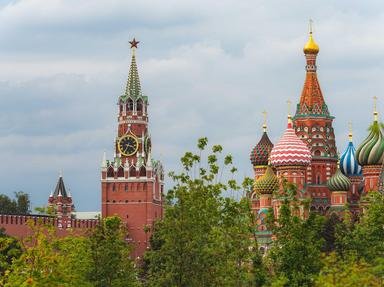Quiz Answer Key and Fun Facts
1. Nicholas II was crowned the Tsar of Russia in 1894. What did the public call this Tsar?
2. Who led the crowd of protesters on Bloody Sunday?
3. Nicholas II continued as Tsar, even after the events of Bloody Sunday.
4. When was Stolypin assassinated?
5. What does 'Rasputin' mean?
6. In October 1917 did the Bolsheviks have the support of the majority of the Russian people?
7. Which party gained the highest number of votes in the Constituent Assembly's election?
8. Which of the following treaties did Lenin sign?
9. In which year was Trotsky exiled?
10. Which organization drew up Stalin's Five Year Plans?
Source: Author
bookworm2207
This quiz was reviewed by FunTrivia editor
bloomsby before going online.
Any errors found in FunTrivia content are routinely corrected through our feedback system.
